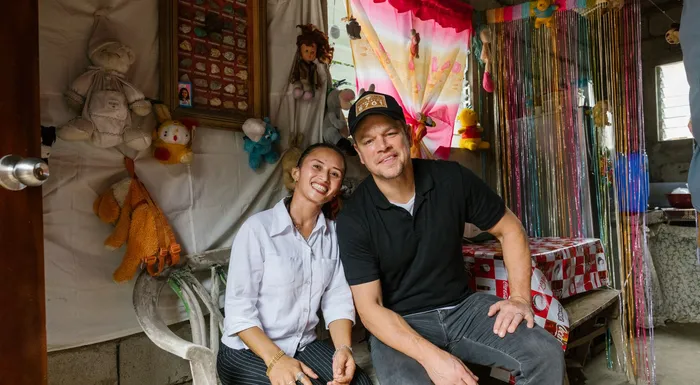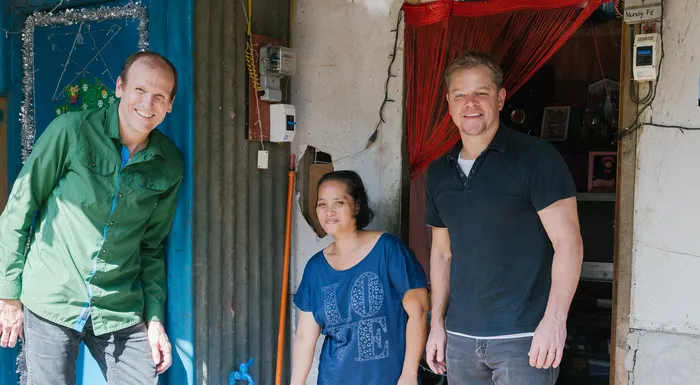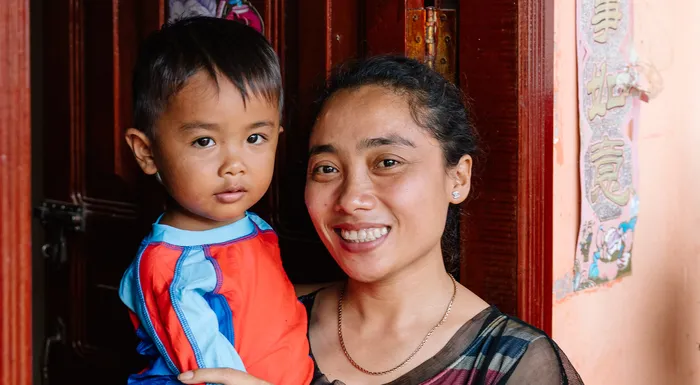Funding solutions that work
Water.org has found if given a choice and an opportunity to pay for water and sanitation improvements over a reasonable period of time, millions of people opt to finance long-term solutions versus struggle day-to-day to find that next liter of drinking water. One of the millions who used her small, affordable loan as a solution to her family's water crisis is Elenita.
Elenita is proud she can now spend her days at home, sewing bags and aprons for a living. This was not always the case.
Elenita’s home sits gracefully on a quaint street in a peri-urban neighborhood in the Philippines. Potted herbs and fruit trees surround her humble abode where Elenita and her husband raise their boys. While the boys are at school, she sews bags and aprons for department store distributors. Some might never believe a family like Elenita’s could lack access to safe water and a toilet, but the reality is until recently, they did. Just a few months ago, her time was consumed with collecting water.
“Life is so much better than before. I have more time and energy to work. I don’t have to wake early to collect water, and we can even afford more because I am able to do more sewing now.”
Like Elenita’s family, more than 7 million Filipinos lack access to water and sanitary toilets. Only five percent of households are connected to sewer systems. Further, many households cannot connect to water systems due to the high, up-front connection costs. Instead, families often rely on unsafe water sources, or expensive bottled water from informal water sellers. Before the construction of her water pump, Elenita paid high prices for water or walked to collect it from a community well. Because so many live this way, and the need for water and sanitation is so high in the Philippines, Water.org conducted an assessment using funds from our New Ventures Fund to determine how our solutions could benefit those in need.
Now included as a part of their lending portfolios, microfinance institutions across the Philippines are helping empower families by removing the financial barriers that stood between them and safe water or a toilet. By making these small, affordable loans available to the poor, households are able to finance water taps and toilets. This is how Elenita and her husband constructed a hand-pump and a bathroom on their property. With their loan, they financed the construction of both. This is why she has time to do more in life, this is why her boys can attend school, and this is why she is able to say, "Life is so much better than before. I have more time and energy to work. I don't have to wake early to collect water, and we can even afford more because I am able to do more sewing now."


